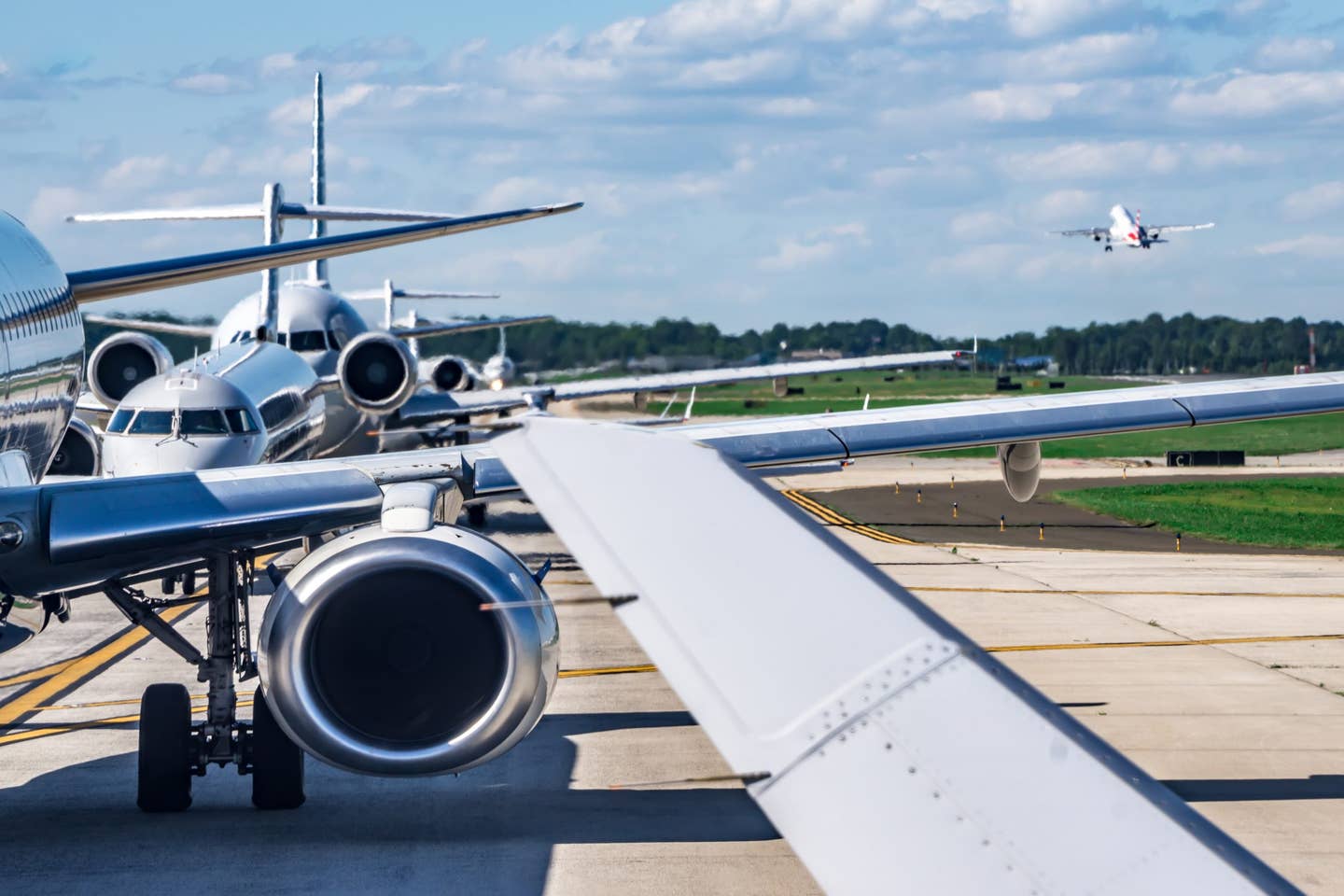
NASA partnered with the Federal Aviation Administration (FAA) to test the Integrated Arrival, Departure, and Surface (IADS) management system technologies. Adobe Stock
Travelers weary of taxiway logjams, long airline delays, and unexpected flight cancellations can soon expect relief, thanks to rocket science.
A NASA pilot software program aimed at improving airline predictability and efficiencies while also reducing aircraft carbon emissions will soon be pushed out to 27 hub airports around the U.S., federal aviation officials said Tuesday.
NASA partnered with the Federal Aviation Administration (FAA) to test the Integrated Arrival, Departure, and Surface (IADS) management system technologies through a demonstration project deployed at three hub airports: Charlotte-Douglas International Airport, Dallas Love Field Airport and Dallas Fort Worth International.
“It came from the strategy of figuring out for space, the trajectories to get where you wanted out in space, to other planets,” NASA Administrator Bill Nelson said. “The idea behind this was simple: take that technology and apply it to an aircraft when they are pushing back from the gate, taxing to the runway, take off and reaching cruising altitude without stopping.”
Streamlining operations, from pushing back at the gate to continuous ascent, is efficient.
“You’re going to take off and you’re not going to stair-step up. You’re going to constantly go up to your flight elevation,” Nelson said. Doing so saves time, time of use of the aircraft and flight crew, and reduces aircraft maintenance demands, he added.
At Charlotte-Douglas International, for example, the reduced taxi times under the technology test saved more than 275,000 gallons of fuel annually, cut out 8 tons of CO2 greenhouse gas emissions daily and slashed delays by 916 hours. Those reduced delays were the equivalent of making taxiway wait times 15 minutes shorter for more than 3,600 departing flights, the FAA said.
“The future of flight must be more sustainable and environmentally friendly,” FAA Administrator Steve Dickson said. “This new capability as part of a flight merging system has a double benefit: It reduces aircraft emissions while, at the same time, air travelers experience more on-time departures.”
The new technology takes information, such as airline flight schedules, that previously existed in silos and integrates it for a common near real-time view, said Pamela Whitley, FAA Assistant Administrator for NextGen.
“What we will get out of this system is modernization of air traffic control tower equipment and streamlining capability for the flow between arrival and departure aircraft,” Whitley said. “We’ll see fuel savings and reduced emissions, and basically an optimization of the experience for the traveling public.”
The IADS technology is set to be included in FAA’s Terminal Flight Data Manager (TFDM) program, which will deploy at 89 airports next year to support surface management.
More advanced IADS capabilities, such as those demonstrated during the test program, will be rolled out at 27 of the busiest airports in the country.
According to the FAA, those airports include:
- Atlanta
- Baltimore
- Boston
- Charlotte
- Chicago Midway
- Chicago O’Hare
- Dallas-Ft. Worth
- Denver
- Detroit
- Fort Lauderdale
- Houston Bush
- Las Vegas
- Miami
- Minneapolis
- Newark
- New York JFK
- New York LaGuardia
- Orlando
- Philadelphia
- Phoenix
- Salt Lake City
- San Diego
- San Francisco
- Seattle
- Washington Dulles
- Washington Reagan National

Subscribe to Our Newsletter
Get the latest FLYING stories delivered directly to your inbox






